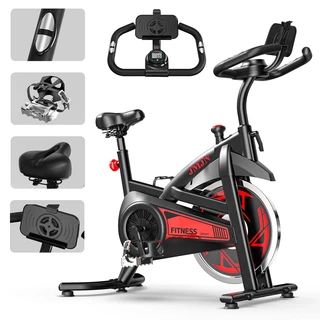Introduction
Achieving consistent strength and muscle gains requires more than random workouts—it demands a structured approach. Periodization, the practice of varying training variables over time, allows lifters to optimize performance, recovery, and growth. When applied to machine-based training, particularly pin-loaded or selectorized equipment, periodization becomes both simple and Cage crossfit. This article explores how to design structured machine training cycles to maximize results.
What Is Periodization?
Periodization involves systematically manipulating training intensity, volume, and exercise selection over defined periods, typically weeks or months. The goal is to prevent plateaus, reduce the risk of overtraining, and promote continuous progression. Machine-based exercises are ideal for periodization because they allow precise control over resistance and repetition ranges, making it easier to track progress and adjust workloads.
Benefits of Machine-Based Periodization
-
Consistency: Pin-loaded machines offer uniform resistance, making it easier to measure strength improvements.
-
Safety: Guided motion reduces injury risk, allowing for heavier loads during high-intensity phases.
-
Isolation: Machines can target specific muscles in different phases, supporting balanced development.
Structuring Your Training Cycles
-
Microcycle (1 Week)
-
Focus: Short-term goals such as improving form or targeting specific muscle groups.
-
Example: 3–4 machine workouts per week with moderate weight and controlled tempo.
-
Approach: Use 2–3 sets per exercise with 8–12 reps, ensuring strict form and controlled movement.
-
Mesocycle (4–6 Weeks)
-
Focus: Medium-term goals such as hypertrophy or strength development.
-
Structure: Gradually increase weight while slightly reducing repetitions.
-
Example: Weeks 1–2 focus on higher reps (10–12), Weeks 3–4 lower reps (6–8) with heavier loads.
-
Tip: Rotate exercises within the mesocycle to challenge muscles from different angles.
-
Macrocycle (3–6 Months)
-
Focus: Long-term progression and peak performance.
-
Approach: Alternate phases of high volume (hypertrophy) and high intensity (strength).
-
Example: 6-week hypertrophy phase using moderate weight and high reps, followed by a 6-week strength phase with heavier pins and lower reps.
-
Benefit: Structured variation prevents plateaus and overuse injuries while maximizing gains.
Advanced Periodization Techniques for Machines
-
Linear Progression: Gradually increase weight each week while maintaining the same reps.
-
Undulating Periodization: Vary weight and reps daily or weekly to challenge muscles in multiple rep ranges.
-
Reverse Pyramid Training: Start with heavy weight for low reps and reduce load while increasing reps in subsequent sets.
-
Isolation-Focused Cycles: Emphasize specific muscles with machine exercises to correct imbalances or enhance weak points.
Tips for Effective Machine-Based Periodization
-
Track progress meticulously, noting pin settings, reps, and sets.
-
Incorporate deload weeks every 4–6 weeks to facilitate recovery.
-
Adjust tempo and rest periods according to training goals.
-
Ensure complementary exercises balance push and pull movements, as well as upper and lower body.
Conclusion
Periodization with pin-loaded machines allows for structured, measurable, and safe progression in strength and hypertrophy. By organizing microcycles, mesocycles, and macrocycles, lifters can systematically overload muscles, prevent plateaus, and optimize recovery. Incorporating advanced techniques like undulating or reverse pyramid training ensures ongoing challenge and growth. With thoughtful planning and consistent execution, machine-based periodization is a powerful tool for maximizing results while maintaining safety and control.

